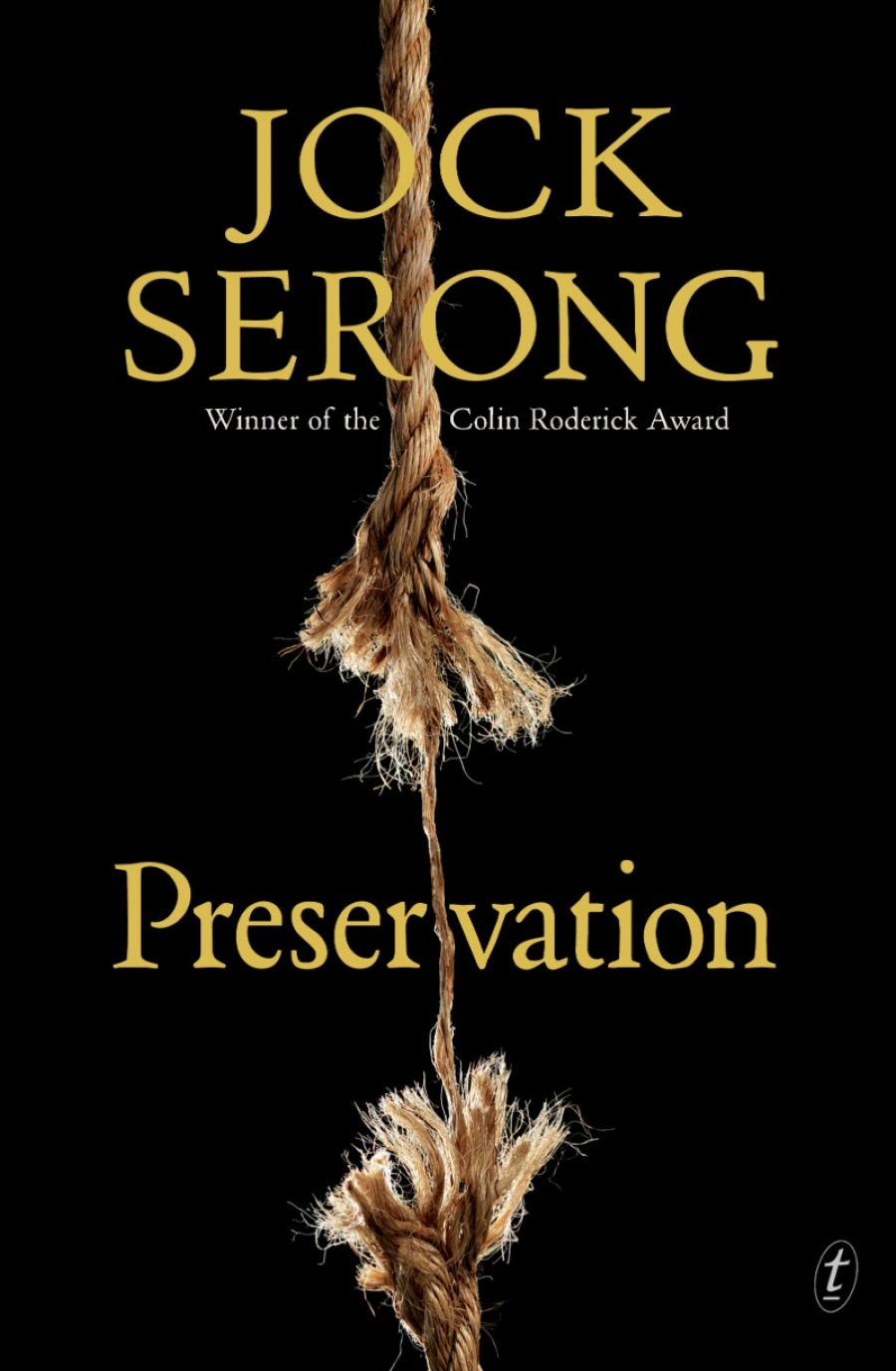
- Free Article: Yes
- Contents Category: Fiction
- Custom Article Title: James Bradley reviews 'Preservation' by Jock Serong
- Review Article: Yes
- Online Only: No
- Book 1 Title: Preservation
- Book 1 Biblio: Text Publishing, $29.99 pb, 368 pp, 9781925773125
Much of our information about the men’s experiences comes from the account William Clarke published in a Calcutta newspaper after his return from India, but work has also been done by historian and archaeologist Michael Nash and others who worked on the excavation of the wreck in the early 1990s. Serong’s version of the story draws upon these sources and many more, fluidly deploying historical detail while also being unafraid to interpolate and reimagine.
Perhaps the most significant alteration is the transmogrification of one of the survivors, John Bennet, into the man we know as John Figge. Ostensibly a tea merchant, Figge is nothing of the sort: when the reader first encounters him, he has just woken up next to the corpse of the real Figge in a Calcutta bedroom and, still spattered with his unfortunate victim’s blood, is already beginning the process of assuming his identity.
There is a whiff of the uncanny about this scene. Having awoken naked, as if reborn, the new Figge must remember himself, a process that comes with the unsettling observation that he ‘is left-handed this time, it seems’. With its echoes of Moretti and Marx, this eeriness – amplified when it becomes clear that Figge, or whoever he really is, has assumed multiple identities over the years, stealing lives in the Arctic and elsewhere – is suggestive of the book’s larger interest in the rootlessness of capital and the casual brutality of colonial exploitation. This flourish is never really developed, but it doesn’t need to be, for even without it Figge is a truly horrifying creation. Brutal, calculating, uninhibited by doubt or conscience, he conspires with Clark to wreck the ship as part of a scheme to sell its cargo of rum, then wrecks the longboat so he will have Clark at his mercy. Once they are on foot, he sets about ridding himself of the other survivors so there will be nobody to challenge his version of the story.
 Jock Serong (photograph by Rowena Naylor)
Jock Serong (photograph by Rowena Naylor)
As demonstrated by the wreck of a boatload of refugees in his last novel, the Colin Roderick Award-winning On the Java Ridge (2017), Serong brings both power and intelligence to his portrayals of characters fighting to survive. While there is nothing in Preservation as intense or visceral as some of the scenes in On the Java Ridge, his depiction of the journey northwards is never less than compelling.
This intensity is both amplified and complicated by the novel’s structure, which juxtaposes the accounts of Figge, Clark, and Srinivas with the story of Joshua Grayling – the lieutenant assigned to record and assess Figge and Clark’s stories – and his wife, Charlotte. But these competing versions of what has transpired also allow the novel to explore the different ways the various characters respond to the landscape and, perhaps more importantly, the people who inhabit it. For the self-serving Clark, the land and its people are merely inconveniences, and their only real interest lies in their ability to create wealth (the real Clark is credited with the discovery of coal on the Illawarra escarpment during the walk north). To Clark’s mind, the land is something to be controlled, its mutability offensive to his sensibilities; at one point he speaks of ‘the trading houses’ and ‘mills’ that will rise once the lagoons and shallow pools that line the coast are ‘firmly defined by seawalls’.
This inability to see the place for itself is contrasted with the more watchful eye of Srinivas. Used to being invisible and nameless, at least to his white masters, he sees beauty in the landscape, and kindness in the Aboriginal people who assist them along the way.
Serong makes a point of acknowledging the influence of the work of Bruce Pascoe and Bill Gammage upon his depiction of Aboriginal life (Preservation’s emphasis upon the material plenty and technological sophistication of Aboriginal life suggests it may well be read as one of the first post-Dark Emu novels). Likewise, its fascination with transformation and the sheen and eroticism of the writing (and indeed the emphasis upon Australia’s place in a larger colonial machine) occasionally recall the work of Rodney Hall, and in particular his magnificent The Yandilli Trilogy (1994). Yet this gripping and extremely accomplished novel never feels beholden to its antecedents or bogged down by research. Instead, it offers a fresh glimpse of the violence at the heart of the colonial project, not just as it was, but as it is.
(A tick means you already do)


Comments powered by CComment